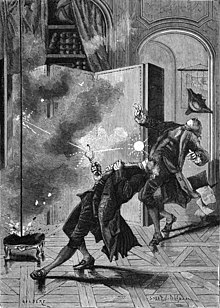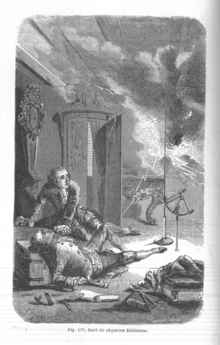Career
![[icon]](uploads/commons/thumb/1/1c/wiki-letter-w-cropped-svg/20px-wiki-letter-w-cropped-svg.png) | This section needs expansion. You can help by adding to it. (March 2022) |
After his education, Richmann spent the rest of his life as a professor of physics at the university in St. Petersburg and a center of scientific research. There he dealt with problems of thermodynamics and with investigations of electrical phenomena.
He became famous above all for establishing the first general equation for calorimetric calculations. This law was later called Richmann's law in his honor.
Richmann also became famous for his investigations on thunderstorm electricity, which led to his tragic death in 1753. Richmann also worked as a tutor to the children of Count Andrei Osterman.[citation needed] Richmann translated Alexander Pope's Essay on Man into German from French, which appeared in 1741.[citation needed] In that year, he was also elected a member of the St. Petersburg Academy of Sciences.[citation needed]

